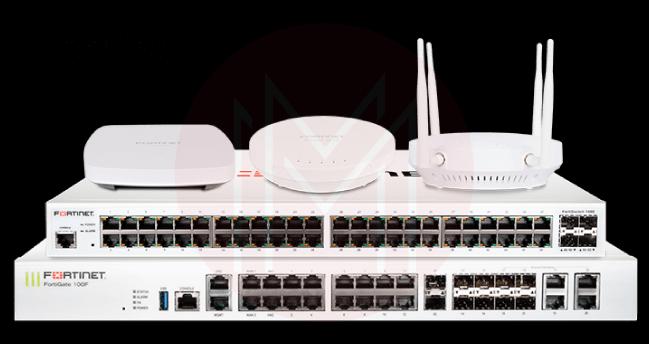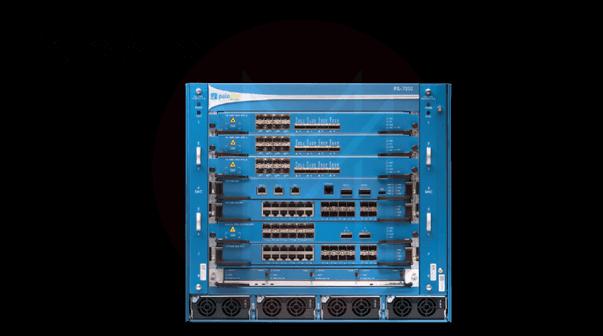The third generation of firewall technology is known as a next-generation firewall (NGFW), and it is a crucial part of network security.
NGFWs offer features above and above those of a conventional, stateful firewall, such as application awareness and control, cloud-delivered threat intelligence, and integrated intrusion prevention.
NGFWs can thwart contemporary, sophisticated threats including application-layer attacks and sophisticated malware in addition to stateful inspection of network traffic and access control. Here are some things to consider while selecting an NGFW:
- Breach prevention and sophisticated security tools, such as an intrusion prevention system (IPS), URL filtering, sandboxing, cutting-edge malware protection, and sophisticated threat intelligence.
- Comprehensive network visibility.
- Options for adaptable management, deployment, and customization.
- The capacity to give prioritised alerts, detect threats in seconds and identify successful breaches in minutes (or hours).
- Integration of products and automation.
An NGFW should provide those features regardless of your organization's size—small, medium, or large. These two NGFWs are frequently compared by cybersecurity buyers in the market for NGFWs, and for good reason—both made our list of the best NGFWs and have robust, independently validated security.
Fortinet vs Palo Alto - Table of Contents
- What is Fortinet?
- Features of Fortinet
- What is Palo Alto?
- Features of Palo Alto
- Pros and Cons
- Comparison
- FAQs
What is Fortinet?
The EDR product from Fortinet, called FortiEDR, provides real-time automatic pre- and post-infection endpoint security. Fortinet shows to be a thorough endpoint security platform with organised incident response across numerous communication devices such servers with legacy and modern operating systems, operational technology, and manufacturing systems. It actively reduces the attack surface, stops malware infestations, and immediately responds to possible threats.
| If you want to enrich your career and become a professional in Fortinet, then enroll in "Fortinet Training". This course will help you to achieve excellence in this domain. |
Features of Fortinet FortiGate
Email security, EDR, API protection (WAF/WAAP) and web application firewall/web application, Identity and access management, deception, and Network access control (NAC), are all part of Fortinet's extensive security portfolio, which also includes firewalls (IAM). Among the most recent upgrades include the inclusion of a security operations centre (SOC) as a service, as well as ZTNA and SASE product possibilities. Fortinet has also enhanced its advanced threat detection and URL filtering features. Additionally, the network operations centre (NOC) and security operations centre (SOC) activities of the Fabric Management Center have been merged.

The main features and advantages of Fortinet's Next-Generation Firewalls are as follows:
- SSL protection that includes TLS1.3, Full network visibility, and automatic threat protection are all viable ways to combat ransomware.
- Using services driven by machine learning (ML) and artificial intelligence (AI), you can control all risks and reduce costs. Among these are an intrusion prevention system (IPS), web and video filtering, and DNS security services.
- You can give your distributed workforce a secure and streamlined user experience using Zero Trust Network Access (ZTNA).
[ Learn Complete Fortinet Tutorial ]
What is Palo Alto?
Endpoint protection tool Palo Alto Networks Traps combines endpoint detection and response capabilities with effective endpoint protection technologies as a single agent. It gives security teams the ability to automatically protect against, find, and react to assaults. Palo Alto uses AI and machine learning strategies to counter threats that are undiscovered, well-known, or very sophisticated.
To give enterprises a uniform view of security events across their IT infrastructures, XDR products expand on EDR concepts. It is important to note that Palo Alto Networks no longer offers support for traps as of today because that support was terminated on March 1, 2022. Traps has been merged into Cortex XDR. This document provides instructions for switching from Traps Endpoint Security Manager to Cortex XDR.
Features of Palo Alto Networks Firewalls
In this Magic Quadrant, Palo Alto Networks is in the lead position. They provide various firewalls for various deployment use cases, including virtual firewalls (VM-Series), hardware firewalls (PA-Series), firewalls as a service (FWaaS) (Prisma Access), and firewalls that are containerized (CN-Series). Additionally, they provide identity-based segmentation using Prisma Cloud. Panorama is a physical and virtual appliance that offers centralised management for firewalls. In addition to firewalls, Palo Alto also offers cloud security, endpoint security, and security operations products.

The NGFWs made by Palo Alto Networks mostly include the following features:
- The VM-Series of virtual, simple-to-deploy, automatable, and scalable firewalls isolate and safeguard crucial systems, enhance public cloud security, and safeguard private clouds.
- Without delaying development, containerized NGFWs from the CN-Series protect traffic between container trust zones and other workload types in Kubernetes environments.
- The PA-Series NGFWs' hardware is designed for simplicity of use, integration, and automation. Consider the PA-7000 series, which offers business and service provider deployments adaptability, simplicity, intelligence, and power while enabling you to protect your data centre at top speed.
Pros and Cons of Fortinet and Palo Alto
Pros and Cons of Fortinet
Pros:
- Fortinet is simple to set up and maintain despite its technical competence, whether it be a hardware firewall or a cloud security layer.
- A reputable market leader in the security industry is in charge of the service.
- In addition to firewall protection, the UTM platform offers a lot more features.
- There are Windows, macOS, and Linux clients available.
Cons:
- Can seem expensive to small businesses with tight finances.
- Consider Fortinet seriously if you're a business owner ready to deploy complete protection for your office networks and data centres, especially if you plan to grow. Fortinet solutions are unquestionably the best choice for your company if your data operations are extremely sensitive.
Pros and Cons of Palo Alto
Pros:
- It may find many types of possibly harmful files as well as operating system executable files. One-click is all it takes to integrate AutoFocus with Palo Alto products.
- Ensuring that you are safeguarded against the most recent threats, such as zero-day attacks. We refer to this as zero-day monitoring.
- By enabling on-site sandboxing of files, the product uses Palo Alto's threat prevention capabilities to deal with compliance challenges.
- Its price is comparable to other similar products on the market, and it seamlessly integrated with the existing Palo Alto systems. Scalability and ease of management are further key benefits.
Cons:
- Like other sandboxes, WildFire must keep up with malware sandbox evasion tactics, which calls for higher file size restrictions.
- WildFire needs better initial administration and setup, and more file types should be able to be supplied and scanned.
- There is no performance warning option for the cloud, and it is rather expensive.
[ Also Check out Fortinet vs Cisco ]
Fortinet vs Palo Alto - Comparison
According to Gartner, one of the best firewall providers is Palo Alto's WildFire sandboxing solution. It can immediately comprehend the application's flows and hazards thanks to its Application Command Center. Stable big and infrequent releases, costs, and performance when managing a wide variety of devices are drawbacks. The researchers assert, however, that users typically express high levels of satisfaction and loyalty.
According to Gartner, Fortinet is difficult to beat whether performance or price are highly regarded in the assessment. The business has a strong firewall with top-notch hardware, visibility, reporting, and simple implementation. However, Fortinet frequently comes in second place behind other top competitors in technical evaluations where fundamental features like VPN, intrusion prevention, application control, management, and Sandboxing are heavily weighted, and the lack of direct vendor support is a drawback for big businesses.
Here are a few of the key distinctions between Fortinet and Palo Alto, according to various criteria:
| Fortinet | Palo Alto | |
| Performance | The 6753 Mbps offered by Fortinet was excellent for a low-cost solution. | Palo Alto outperformed each firewall examined in the NSS Labs with a speed of 7888 Mbps. |
| Security | In newly released test findings, NSS Labs gave the Fortinet FortiGate 500E a security efficiency grade of 99.3%. | In contrast, Palo Alto's PA-5220 scored 98.7%. |
| Implementation and Management | Users of Fortinet typically report faster times. A Fortinet customer summed up the situation thusly: "It is easy to grasp, offers excellent data, and is reasonably priced. | Users of Palo Alto may find the product to be more difficult, yet they applaud numerous key features. |
| Value | In NSS evaluations, Fortinet outperformed the competition with a $2.00 TCO per protected Mbps. | Out of 10 tested solutions, the $7 TCO from Palo Alto came in fifth place. |
| Cloud Features | Fortinet is increasing its efforts in the capabilities of its virtual firewall. | Here, Palo Alto had the upper hand. A specific strength is managing cloud apps and visibility. |
| Support | Customers of Fortinet rely heavily on the calibre of their partner channel. Users of Fortinet point out that firmware updates and new features can vary in quality. | Palo Alto excels as a result of direct assistance from vendors. Palo Alto's stability during the infrequent significant updates is unsatisfactory. |
| Deployment | The same solution used by the best public cloud platforms is accessible in the form of a virtual machine, appliance, and cloud for Fortinet NGFWs. | Palo Alto NGFWs are available as physical devices (PA series) as well as virtual machines (VM series) for use in cloud-based or virtualized environments. |
| Pricing | Fortinet's entry-level appliances cost around $500, while the 7060E-8 at high-end corporate rates can cost as much as $350,000. Pricing consists of the standard costs for hardware and services, such as FortiGuard subscription licences and FortiCare support options. You can buy hardware and services separately or as a package. Offerings in the cloud and virtual machines are based on the same price model. The cost of the 500E examined by NSS ranges from $5,000 to $22,000, depending on the amount of support and warranty. | A wide variety of NGFW alternatives are available from Palo Alto Networks. The company's newest products, the PA-5280, PA-3200, and PA-220R, range in price from $2,900 to $200,000, while the base price of the PA-220 is $1,000. The 5280 offers a VPN speed of 24 Gbps and 64 million sessions, compared to the 220's 100 Mbps and 64,000 sessions. The cost of the PA-5220 that NSS tests, including additional support packages, is about $70,000. |
FAQs Regarding the Difference Between Fortinet and Palo Alto
1. Why is Fortinet better than Palo Alto?
Both companies provide firewalls as physical or virtual devices as well as cloud-based firewall options. While Palo Alto also sells physical appliances, it emphasises its cloud solutions more than Fortinet, which is more proud of its network appliances than any of its other products.
2. What makes Fortinet different?
In networked, application, cloud, or mobile settings, only the Fortinet Security Fabric architecture can provide security without compromise to answer the most pressing security concerns.
3. Why choose Palo Alto Networks?
Customers pick Palo Alto Networks in large part due to its simplicity of use. They desire a unified platform that lessens operational complexity and provides security teams confidence in their ability to follow best practises and decrease human error.
Conclusion
With total network visibility and improved threat protection, Next-generation firewalls (NGFWs) from Fortinet protect any edge at any scale. Some of the key characteristics of Fortinet NGFWs are AI/ML-powered FortiGuard services, full protection and visibility, natively integrated proxy, automation-driven network administration, hyper-scale security, and security fabric integration.
Palo Alto Networks' physical, virtual, and container NGFWs all leverage machine learning. You can leverage cloud-delivered security services, centralised network security administration, and the most recent PAN-OS technologies to future-proof network security.
Both NGFW service providers are wise investments; compare and evaluate the available options, then pick the one that most closely matches the profile of your firm.
Decide between the two brands based on your individual circumstances. In our investigation and review, Palo Alto was suggested if you needed the greatest level of firewall and security capacity. If you're worried about money and resources, take a closer look at Fortinet.
 On-Job Support Service
On-Job Support Service
Online Work Support for your on-job roles.

Our work-support plans provide precise options as per your project tasks. Whether you are a newbie or an experienced professional seeking assistance in completing project tasks, we are here with the following plans to meet your custom needs:
- Pay Per Hour
- Pay Per Week
- Monthly
| Name | Dates | |
|---|---|---|
| Fortinet Training | Dec 27 to Jan 11 | View Details |
| Fortinet Training | Dec 30 to Jan 14 | View Details |
| Fortinet Training | Jan 03 to Jan 18 | View Details |
| Fortinet Training | Jan 06 to Jan 21 | View Details |

Madhuri is a Senior Content Creator at MindMajix. She has written about a range of different topics on various technologies, which include, Splunk, Tensorflow, Selenium, and CEH. She spends most of her time researching on technology, and startups. Connect with her via LinkedIn and Twitter .
















